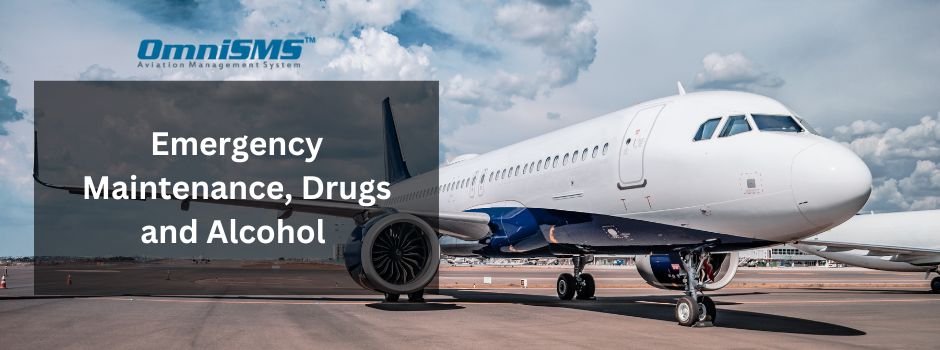Emergency Maintenance, Drug and Alcohol Misuse

Drug and alcohol misuse continue to plague our aviation industry today. Back in 2017 the U.S. DOT proposed adding four opioids—hydrocodone, hydromorphone, oxymorphone and oxycodone – to FAA’s drug testing requirements for certain commercial pilots, aircraft mechanics and other covered employees. In my opinion, it was long overdue. Painkiller addiction and abuse have plagued us for years, driven in part by doctors’ prescriptions.
Prescription drug use
Does your organization have an Anti- Drug and Alcohol Misuse Prevention Program? A formal ADAMPP requires considerable investments of time and resources to implement and maintain. We know that drugs (including prescription painkillers) and alcohol don’t mix with safety-sensitive duties of flight and cabin ops, tech services and ramp ops. Will you wait for an official opioids rule before educating your people on the hazards associated with these drugs?
Alcohol misuse
I once had to relieve a Captain who showed up for work glassy-eyed and hung over. He was adamant about being ‘legal’, having stopped drinking beer precisely 8 hours earlier. Was he legal? Yes. Safe? No, he was not. It was not an isolated incident, and he wasn’t the only pilot in our company who used alcohol. Had I not been there on the ramp that day, management probably never would have known about this normalized deviation (reporting for duty with a hangover).
Regulations establish only a minimum level of safety. Our best, well-intentioned people can sometimes begin using prescription painkillers after an injury, and may end up struggling with opioid addiction. They are covered, drug-tested and legal; but they may not be safe.
Contractors’ drug and alcohol misuse
So what does emergency maintenance have to do with all this? 14 CFR part 120.35 defines emergency maintenance as maintenance that (1) Is not scheduled and (2) Is made necessary by an aircraft condition not discovered prior to the departure for that location. In other words, you’re about to depart and you discover a snag.
In a perfect maintenance environment with new aircraft and a CASS program that produces ideal maintenance planning, inspection intervals, and component life-limits, there will still be times when the new line service guy busts a nav light or a minor snag occurs while we’re away from base. So we’ll need to contract with a local shop or mechanic on the field who can fix the plane and get us on our way. The emergency maintenance provision allows us to use a shop and personnel who are not covered under an anti-drug and alcohol program. But even if they do have a program, there is also the very real possibility that one or more of the contractor’s employees may be suffering from opioid addiction.
If we use techs to perform maintenance who are not covered, 14 CFR part 120 requires that one of our people covered under the ADAMPP re-inspect the work performed by the contracted tech who is not subject to drug and alcohol testing, and who (for all we know) may have been under the influence of drugs or alcohol (or opioids) when the work was performed.
An effective risk control
Peel away the rules, procedures and forms, and what we have is a simple risk control: Re-inspection of field maintenance performed by contractors.
If you have an ADAMPP, re-inspection (in addition to other requirements) is required by regulation. If you don’t have one, re-inspecting work performed by contractors is certainly a best practice that should be performed whenever practicable. As we all know, improper repairs can set up latent conditions that could lay dormant for years, and foreseeably cause or contribute to an incident or aircraft accident. For a graphic, tragic case study of an improper repair that contributed to an accident, see Air France Flight 4590 on July 25, 2000.
Paul Salerno
OmniSMS
